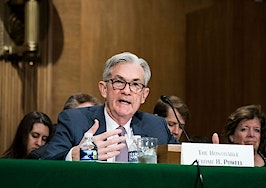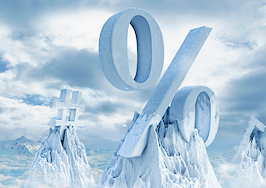After rising in October and seesawing in early November, mortgage rates have since held steady above 3 percent for the last few weeks.
The average rate for a 30-year mortgage has barely moved over the past three weeks, rising a single basis point to 3.11 percent, according to Freddie Mac’s latest lender survey.
“Mortgage rates continue to remain stable notwithstanding volatility in the financial markets,” Freddie Mac Chief Economist Sam Khater said in a statement. “The consistency of rates in the face of changes in the economy is primarily due to the evolution of the pandemic, which lingers and continues to pose uncertainty. This low mortgage rate environment offers favorable conditions for refinancing.”
For the week ending Dec. 2, Freddie Mac’s weekly Primary Mortgage Market Survey reported average rates for the following types of loans:
- For 30-year fixed-rate mortgages, rates averaged 3.11 percent with an average 0.6 point, up slightly from last week’s 3.10 percent figure while remaining higher than its 2.71 percent mark from a year ago. Rates for 30-year loans hit an all-time low of 2.65 percent during the week ending Jan. 7, 2021, according to records dating to 1971.
- Rates for 15-year fixed-rate mortgages averaged 2.39 percent with an average 0.6 point, down from last week’s 2.42 percent and higher than its 2.26 percent mark a year ago. The all-time low rate for 15-year loans was 2.10 percent set the week ending Aug. 5, 2021, according to records dating to 1991.
- For 5-year Treasury-indexed hybrid adjustable-rate mortgage (ARM) loans, rates averaged 2.49 percent with an average 0.3 point, up slightly from 2.47 percent last week and well below the 2.86 percent rate from a year ago. Rates on 5-year ARM loans are still hovering above the record-low 2.40 percent rate set during the week ending Aug. 5, 2021.
The survey results reflect average rates for borrowers with excellent credit who put down 20 percent on a home. The rate factors in the average discount points as well. Borrowers with lower scores, or different point assumptions, can expect different rates.
While rates remain low by historical standards, they have now risen significantly from their all-time lows earlier this year.
Rates for 30-year mortgages are now 17 percent higher than they were in January, with the biggest hikes occurring in the spring and the fall.
The higher rates have taken a heavy toll on demand for new loans — and particularly refinanced ones, according to a separate survey released this week by the Mortgage Bankers Association.
Demand for purchase loans were down 8 percent year over year, while requests to refinance were down 41 percent over that same period.
The low interest rate environment has been fueled in part by the central bank’s support for the economy during the pandemic, which has included $120 billion a month in purchases of U.S. bonds and mortgage-backed securities by the Federal Reserve.
But that assistance may soon be scaled back — and it could happen more quickly than first thought. Federal Reserve Chairman Jerome Powell told a group of Senate lawmakers recently that the strong economy and persistent consumer price inflation could prompt the Fed to place its tapering plans on a faster timeline.
Ultimately, experts expect interest rates to go up from here, with some estimates pegging them at approximately 4 percent by the end of 2022.












